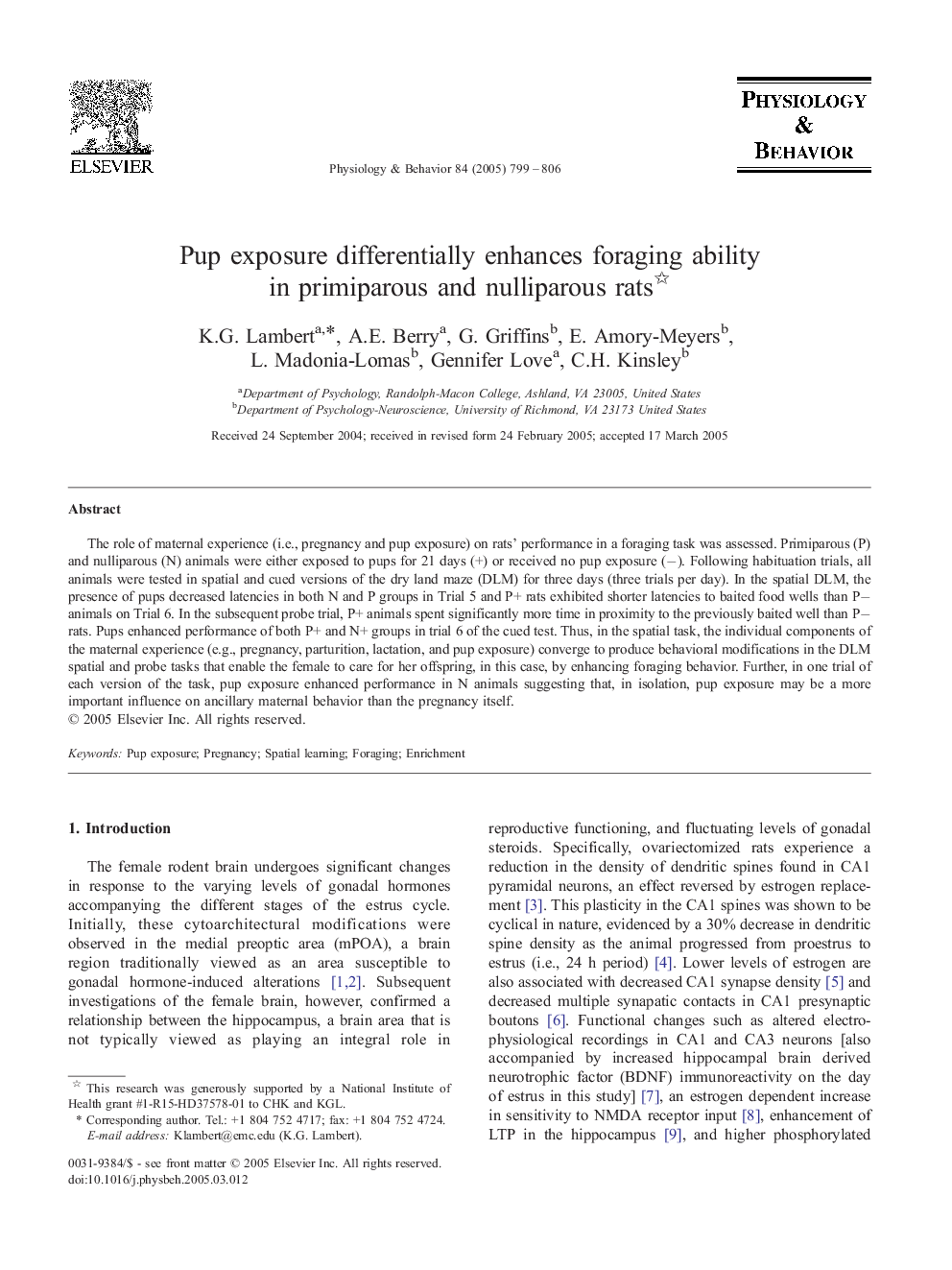| Article ID | Journal | Published Year | Pages | File Type |
|---|---|---|---|---|
| 9149626 | Physiology & Behavior | 2005 | 8 Pages |
Abstract
The role of maternal experience (i.e., pregnancy and pup exposure) on rats' performance in a foraging task was assessed. Primiparous (P) and nulliparous (N) animals were either exposed to pups for 21 days (+) or received no pup exposure (â). Following habituation trials, all animals were tested in spatial and cued versions of the dry land maze (DLM) for three days (three trials per day). In the spatial DLM, the presence of pups decreased latencies in both N and P groups in Trial 5 and P+ rats exhibited shorter latencies to baited food wells than Pâ animals on Trial 6. In the subsequent probe trial, P+ animals spent significantly more time in proximity to the previously baited well than Pâ rats. Pups enhanced performance of both P+ and N+ groups in trial 6 of the cued test. Thus, in the spatial task, the individual components of the maternal experience (e.g., pregnancy, parturition, lactation, and pup exposure) converge to produce behavioral modifications in the DLM spatial and probe tasks that enable the female to care for her offspring, in this case, by enhancing foraging behavior. Further, in one trial of each version of the task, pup exposure enhanced performance in N animals suggesting that, in isolation, pup exposure may be a more important influence on ancillary maternal behavior than the pregnancy itself.
Related Topics
Life Sciences
Biochemistry, Genetics and Molecular Biology
Physiology
Authors
K.G. Lambert, A.E. Berry, G. Griffin, E. Amory-Meyers, L. Madonia-Lomas, Gennifer Love, C.H. Kinsley,
